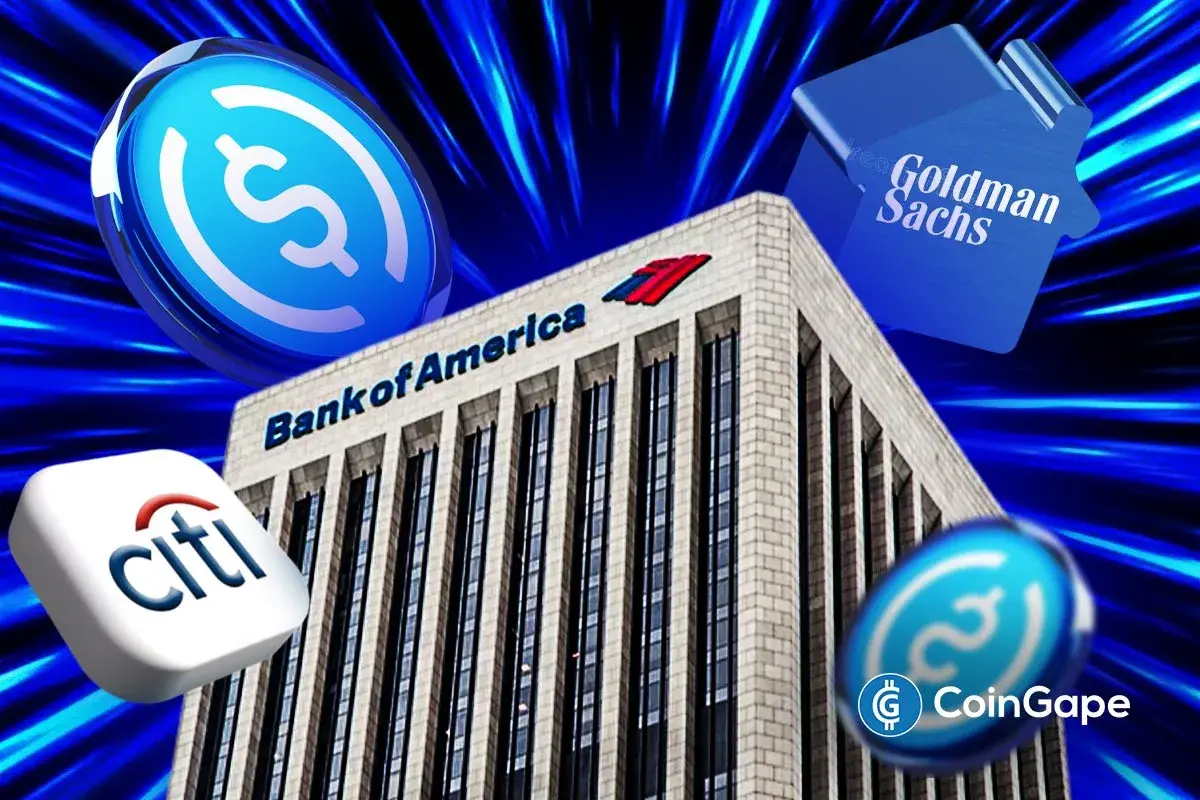Bank of America, Citigroup and Goldman Sachs Explore Issuing Stablecoins Pegged to G7 Currencies

Highlights
- Major banks have come together to launch a G7-pegged stablecoin in an effort to increase the use of crypto.
- The pro-crypto policies by Trump provide new institutional investors with renewed interest in blockchain assets.
- The successful launch of the stablecoin would put pressure on the dominance of Tether in this market.
A group of major world banks is working on a new stablecoin tied to G7 currencies. The plan is one of the biggest endeavors that traditional financial institutions have conducted to delve into blockchain-based assets.
Top Global Banks Turn To Blockchain Amid Trump-Era Crypto Revival
Bank of America, Citi, Deutsche Bank, Goldman Sachs, UBS, Barclays, BNP Paribas, MUFG, TD Bank and Santander are among the participating banks, per a Reuters report. The plan is to develop digital tokens that are fully pegged to major world currencies like the U.S. dollar, euro, yen and the pound.
This initiative follows an increase in demand for stablecoins. It is also part of an effort by traditional banks to find new roles in a financial environment that is now favorable to cryptocurrencies.
The banks said they want to examine whether blockchain-based assets could enhance competition and improve efficiency in global payments. They also emphasized that the effort will comply fully with regulations and best risk management practices. The move aligns with recent policy developments in the U.S., such as the CFTC stablecoin collateral initiative for derivatives.
Trading digital assets has come back into the limelight due to the pro-crypto policies of president Donald Trump. Financial institutions are now eager to integrate blockchain into structured systems following their former wary position about this technology. The action of these leading banks indicates their confidence that stablecoins can exist equally with fiat.
Tether’s Dominance of the Stablecoin Market Faces New Competition
Tether currently controls approximately one-third of the stablecoin market. It owns approximately $179 billion of all available stablecoins, according to data from CoinGecko.
The proposed bank-issued stablecoins can now become a regulated alternative with transparent reserves and institutional oversight. This could change how money moves in crypto and become more appealing to traditional investors.
The joint project also follows a similar move by nine European banks, including ING and UniCredit, which recently announced plans to launch a euro-backed stablecoin.
France’s Société Générale earlier this year became the first major bank to issue a dollar-backed token. Although adoption remains small with only about $30 million in circulation.
Bank-Backed Stablecoins Could End Circle and Tether’s Dominance
Cardano founder Charles Hoskinson reacted to the announcement of the stablecoins launch by these bank giants. According to him, the move would finally result in breaking the monopoly Circle and Tether hold over the sector.
As predicted, the circle/tether monopoly will soon break https://t.co/o4MuHHsCoc
— Charles Hoskinson (@IOHK_Charles) October 10, 2025
A similar trend is already visible at the state level, with North Dakota set to issue its stablecoin, following Wyoming’s footsteps. This further highlights the expanding competition in the stablecoin landscape.
A successful launch of the G7-pegged stablecoin would make it the first multi-currency network by financial institutions. This asset would enable easy payment settlements across borders and interoperability of various financial systems worldwide.
It could also allow the completion of international trades at a quicker pace and reduce exposure to unstable cryptocurrencies. However, no launch date or technological structure has been disclosed by the banks involved yet.
- Coinstore Unveils 5-Year Roadmap as Exchange Marks Fifth Anniversary
- Dogecoin ETFs Fail to Attract Capital Despite Hype as Expert Maintains $1 Price for 2026
- What’s Next for Crypto Market as $4.5B in Bitcoin, Ethereum Options Expire Today?
- Bestchange Review: Easily discover the best onramp and offramp trading platforms for crypto and fiat exchange.
- Ripple Transfers Over $152 Million in XRP to Binance After 600M Coins Shuffle
- Is Solana Price Poised for a +50% Bullish Rally? Here’s What to Expect
- Top 3 Price Predictions for Bitcoin, Ethereum, and XRP in DEC 2025
- Will Chainlink Price Break Toward $20 After 84K LINK Reserve Increase?
- XRP Price Target $3 as Spot ETFs Continue to See Inflows
- Ethereum price prediction following $57.6M ETF Inflows – What’s Coming?
- Here’s Why Solana Price Could Explode to $150 Soon















